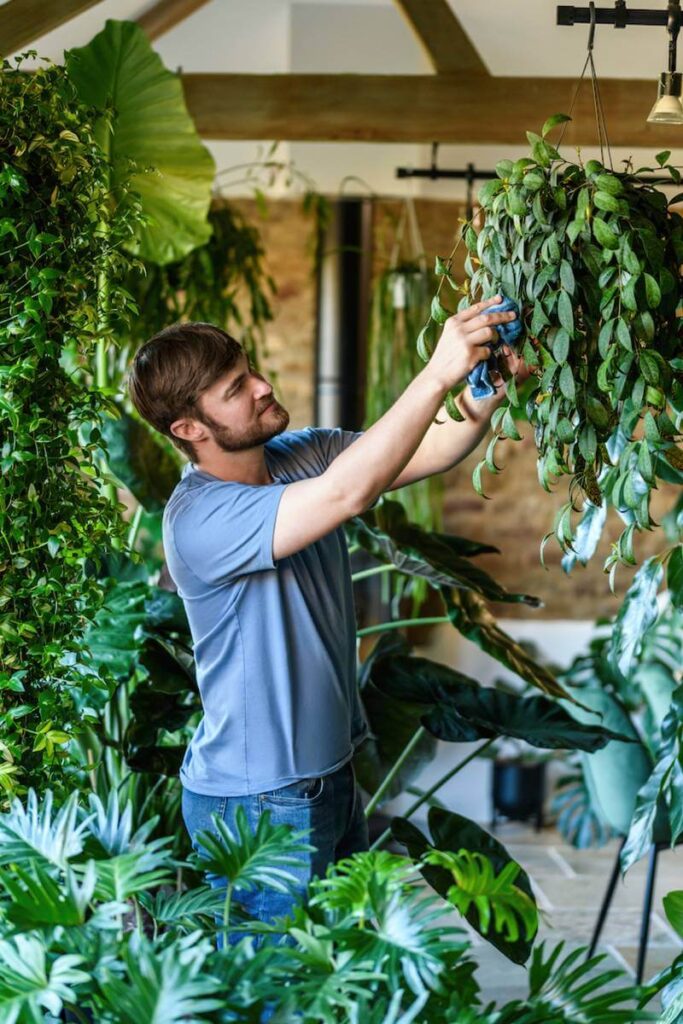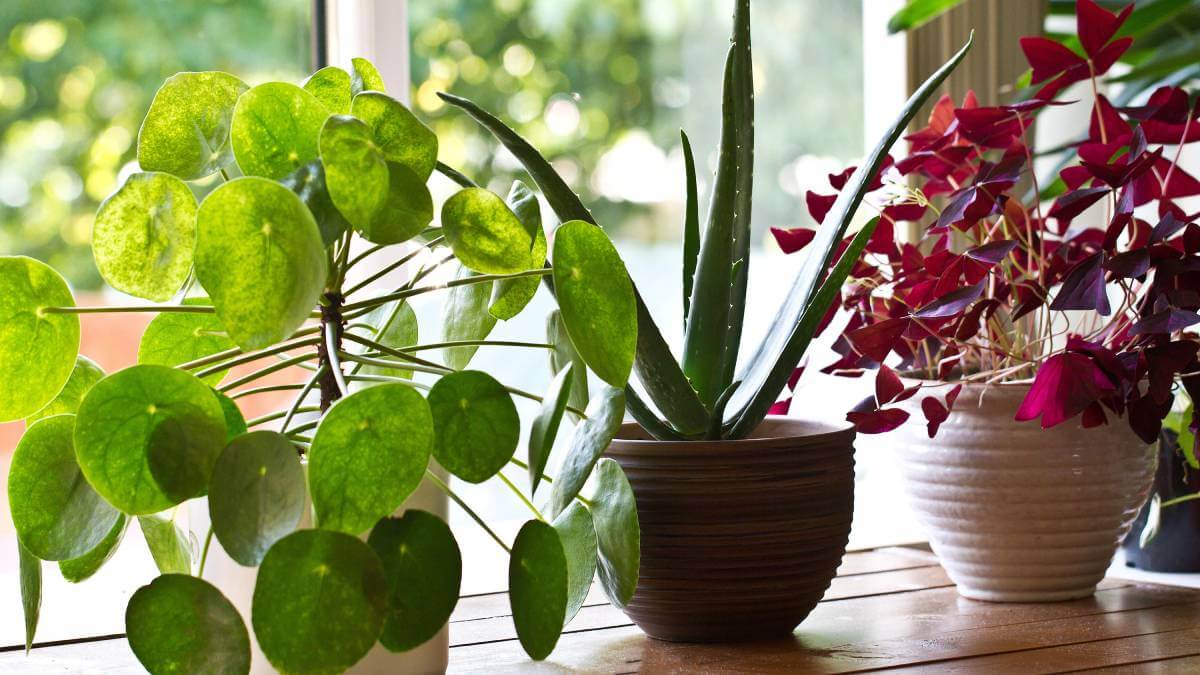Over years of lovingly tending his houseplants, self-taught grower and prolific indoor plant collector Tony Le-Britton has learnt that not all advice on maintaining plants rings true.
Mr Le-Bitton whose Instagram account @NotAnotherJungle has built up more than 230k followers – has now written a book, which sorts the fact from the fiction.
“There is some advice out there that isn’t always based on fact,” says Mr Le-Britton, who runs a houseplant shop in Northampton, UK.
View this post on Instagram
As well as sharing advice with his expansive plant-loving community, he’s researched scientific reports and documents on the subject.
Here are five houseplant myths you should stop believing.
Myth: bottom watering is best
“If it’s working for you, fine – but for someone who hasn’t dealt with plants before, top watering is really going to help, or if you consistently overwater plants or have plants with root rot, top watering is going to help,” says Mr Le-Britton.
“The myth is that people think when you put it into water, the plant is absorbing the water it wants and the roots are basically taking up the water. That’s not the case. The soil is absorbing all the water. And then from there, the roots sometimes take up water from the substrate.
“The problem with bottom watering is if you’re sticking a pot into water, the substrate oversaturates and absorbs so much more water than just watering from the top. And that means if you don’t have lots of light, and your plant isn’t using that water fast enough, then it’s much more likely to be over watered, and to cause root rot and other problems.”
Myth: you must stick to a watering schedule
“People think that you read a care label on a plant that says, ‘Water every seven days’, or ‘Water every seven to 10 days’. Well, it could need watering every two days, if it’s getting optimum levels of light and it’s really warm. Or it also could need watering every month if it’s low light.
“You might check your plants – and some will need watering, other’s won’t,” he says. “Check it once a week but only water it when it’s dry.”
Myth: tap water is bad for plants

“Tap water is absolutely fine for watering houseplants. The only exception to that is carnivorous plants, which require rainwater or water from a river or a pond, something like that,” he says, adding that levels of chlorine in tap water are way below any level that would affect your houseplants.
“In fact, one key element that plants need to grow is chlorine. It is found in the wild and plants use it to grow healthily. Some people boil water, or they’ll leave it out overnight. All that does is concentrate the minerals that are in there because water’s evaporating. If you’ve got rainwater, brilliant! But I grow all my plants, even the very rare ones, using tap water.”
Myth: you have to mist
“If you enjoy doing it and find it relaxing, then go for it. Just know that if you are trying to increase humidity, it’s not doing that. And it can cause things such as fungal problems on the leaf if the water is not drying off,” says Mr Le-Britton. “The plants we have available to us do not need any extra humidity, other than a regular home environment. Leaves are literally designed to keep things out and to keep water in.”
Myth: homemade fertiliser is always best
This is a bugbear for Mr Le-Britton, who says home-made fertilisers are “a total waste of food or total waste of time. Sometimes it can actually create a negative impact on the plant.”
Key types are the banana skin, used as houseplant fertiliser, he notes. “Bananas have loads of potassium, and people think that means their plants are going to get loads of potassium. This is so wrong. Even if it [the skin] did have lots of potassium – which it doesn’t – that’s not what plants need. If plants are going to grow healthily, they need a balanced fertiliser and different plants require different levels of NPK (nitrogen, phosphorus, potassium),” he adds.
View this post on Instagram
If you give your houseplant too much of one nutrient, it can cause ‘nutrient lock’, stopping the plant absorbing other nutrients, warns Mr Le-Britton. “For houseplants, get a synthetic natural blend fertiliser, as they are not able to access natural fertilisers very well,” he suggests.
What about fertilisers made from home-grown comfrey?
“Comfrey fertiliser is brilliant, seaweed fertiliser is brilliant, when used outside, because in the soil you have bacteria that can break those nutrients down and make them accessible to the plants. The plants can’t absorb those nutrients that you’re giving them from comfrey on their own. It’s the relationship with the soil bacteria that allows them to absorb them.”
He says if you put comfrey fertiliser in your houseplant soil, it can cause a build-up of anaerobic bacteria, root rot and fungus gnats.

Not Another Jungle by Tony Le-Britton is published by DK, available now.
Have you heard any of these myths about houseplants? What’s your favourite plant to have in the house? Let us know in the comments section below.
Also read: The best houseplants to boost your wellbeing

